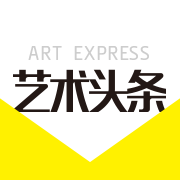
Rothko’s Family Brings Burning Red Paintings to Latvia
2013-05-02 09:11:18 未知
Mark Rothko would be delighted, says his son: Six of the late artist’s abstracts have just gone on show in his remote Latvian birthplace.
Opening the display in Daugavpils, Christopher Rothko says his father would be less happy about auctions that value his works as being among the world’s most expensive (the record for a Rothko so far is $86.9 million).
“He would think it’s a distraction,” Christopher says in an interview at the Daugavpils Mark Rothko Art Center. “When you have prices that are not simply large, but make headlines, people don’t look at the artwork but at the dollar figures, the pound figures or the euro figures.”
The transfer of works to eastern Latvia comes as the country tries to boost tourism through its ties with Rothko, whose paintings were mainly produced in New York. The art center cost 4 million lati ($7.5 million) to refurbish, about 85 percent of which was provided by the European Commission.
“He really wanted you to have this direct communication with art,” Christopher says of his father before we admire the works on show. “He doesn’t want you to look at the paintings and think about how much it might be worth and how much it might be insured for and all that. He really wants you to have a genuine experience. I think he would not be happy about prices.”
The gallery is about 230 kilometers (142 miles) from the Latvian capital Riga, a car journey that takes three hours.
“Other than the Tate, I don’t think there is any museum outside of America that has more than three Rothkos,” says Christopher, wearing a dark suit and red tie.
Blood Orange
Hanging on the walls are Rothko works in signature colors: blazing reds, blood orange, dark chocolate and splashes of buttercup yellow. Christopher Rothko declines to give an estimated value for the works, which are on loan from the Rothko family for three years. The plan is to show pictures on a rotating basis after that.
The center is in a refurbished military arsenal, commissioned in 1831 by Russia’s Emperor Nicholas I. In addition to Rothko’s work, reproductions and archives, the center will house artist residences and studios.
Marcus Rothkowitz was born in Daugavpils on Sept. 25, 1903, when the city was known as Dvinsk. He emigrated a decade later - - first to Portland, Oregon, and later to New York City.
The family moved to avoid military conscription into the Tsarist army and because of pogroms against Jews in surrounding regions, says Christopher.
Latvia Roots
The aim now is to demonstrate that Rothko was not just an American phenomenon -- “that he had strong roots here, that he had history here,” says Christopher. “It’s moving for me because Daugavpils was just an idea when I was growing up. I didn’t have a sense of what it was or where it was or what it meant to my father.”
Christopher, with his sister Kate Rothko Prizel, came to Riga in 2003 on the 100th anniversary of their father’s birth: for the first exhibition of his work in eastern Europe, held in Riga and St. Petersburg.
“My father used to sit down with a map and explain where we come from,” says Kate, also at the Daugavpils opening. The painter’s father was probably born in a small shtetl or village near the city. When she first visited the area, she was met with bread and salt, a traditional welcome in Russia, Latvia and neighboring countries.
The Rothko archives revealed that he had considered a show in eastern Europe as he grew older and nostalgic, and the political situation had made it impossible, Kate says.
Rothko’s “Orange, Red, Yellow” was sold at auction for $86.9 million in May 2012 by Christie’s International (CHRS) in New York, then a record for any contemporary work of art, according to Christie’s.
The artist has become one of the most coveted names at the top end of the art market. He generated $187.2 million in sales at auctions in 2012, making him the fifth-bestselling artist born after 1880, according to the database Artnet.
(责任编辑:张天宇)
注:本站上发表的所有内容,均为原作者的观点,不代表雅昌艺术网的立场,也不代表雅昌艺术网的价值判断。

 阿拉里奥画廊上海转型:为何要成为策展式艺术商业综合体?
阿拉里奥画廊上海转型:为何要成为策展式艺术商业综合体? 吕晓:北京画院两个中心十年 跨学科带来齐白石研究新突破
吕晓:北京画院两个中心十年 跨学科带来齐白石研究新突破 徐冰:地球上不能解决的艺术问题,去外太空换个新角度
徐冰:地球上不能解决的艺术问题,去外太空换个新角度 生于1970前的那些艺术家们:市场反馈积极,美术史价值回归
生于1970前的那些艺术家们:市场反馈积极,美术史价值回归
全部评论 (0)